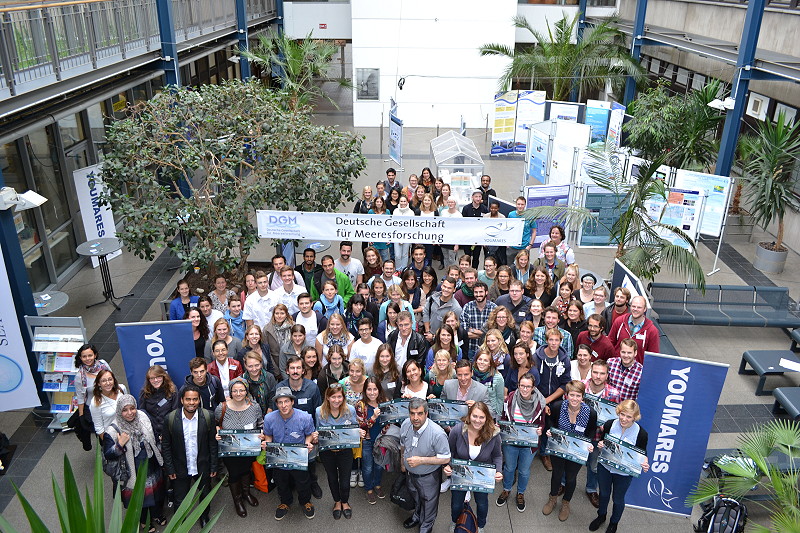by Cornelia E Nauen
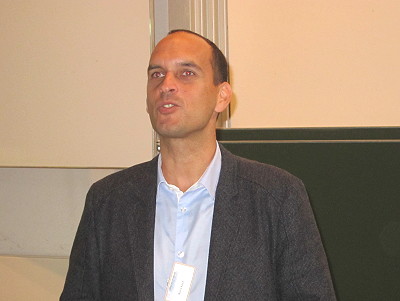
This year, the German Society for Marine Research (DGM) celebrated its 35th anniversary with week-long activities and events at the University in Bremen under the motto "Limits of knowledge and action".
The author is a long-standing member of the DGM. Keeping in touch with latest research, including that carried out by DGM members, is an important aspect of the Mundus maris mandate to make research more readily accessible to non specialists and engage critically with the public.
The interesting impulse speakers and interactive workshops made the success of the Marine Forum organised from 15 to 16 September. The mayor of Bremen, Karoline Linnert, received participants at the end of the first day in the historical town hall for a ceremony to honour long-standing DGM members.
A boat trip on the evening of the last day closed the Forum and served as the ice-breaker for opening the 6th YOUMARES networking conference of young marine scientists. It was a stimulating opportunity enabling early stage scientists and more experienced ones to meet and mingle. The following two days, 17 and 18 September were all for presenting research by young marine researchers and networking among the participants from 20 countries.
Two talks on the first day sketched perspectives on marine research from two major stakeholder groups: elected representatives in parliament and civil society. They both showed demand for results of scientific research, interpretation capacity for research results and interest to engage critically with research.
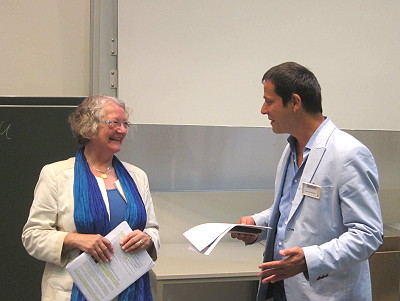 Gesine Meissner, Member of the European Parliament and Chair of the intergroup "Seas, Rivers, Islands and Coastal Areas", spoke passionately about how the complex policy work at European level can and must pay more attention to the sea. The about 90 members of her working group from almost all nationalities and political groupings, except the extreme right, took a particular interest in using the seas in sustainable ways as sources of long during wealth creation and wellbeing.
Gesine Meissner, Member of the European Parliament and Chair of the intergroup "Seas, Rivers, Islands and Coastal Areas", spoke passionately about how the complex policy work at European level can and must pay more attention to the sea. The about 90 members of her working group from almost all nationalities and political groupings, except the extreme right, took a particular interest in using the seas in sustainable ways as sources of long during wealth creation and wellbeing.
They worked particularly closely with the Standing Committees on Transport and Tourism and Industry, Research and Energy.
Gesine Meissner herself also serves as a substitute member of the Environment, Public Health and Food Safety.
One of their major concerns of the intergroup was to spread awareness about the Marine Strategy Framework Directive. It came into force mid 2008 and was supposed to be transcribed into national law by all EU Member States by 2010, but is still not well anchored in public conscioiusness and practice.
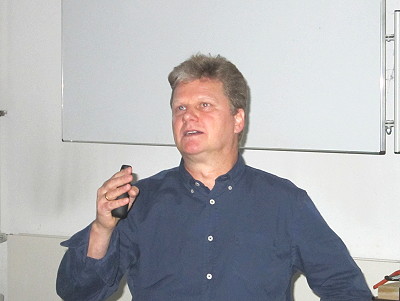 The Marine Directive aims to achieve Good Environmental Status (GES) of the EU's marine waters by 2020 and to protect the resource base upon which marine-related economic and social activities depend.
The Marine Directive aims to achieve Good Environmental Status (GES) of the EU's marine waters by 2020 and to protect the resource base upon which marine-related economic and social activities depend.
It is the first EU legislative instrument related to the protection of marine biodiversity, as it contains the explicit regulatory objective that "biodiversity is maintained by 2020", as the cornerstone for achieving GES.
The intergroup is keen to get easier access to scientifically validated information that can help them in doing their parliamentary work and is in turn keen to encourage higher levels of funding for marine research.
Alfred Schumm, World Wildlife Fund for Nature - WWF, attacked the failure of global and regional fisheries management systems that resulted in high levels of tolerated illegal, unreported and unregulated (IUU) fishing.
WWF's Smart Fishing Initiative does not want to replace missing enforcement by government authorities, but rather wants to create incentives for companies engaged in fish catches and marketing to comply with the rules.
The WWF Automatic Information System (AIS) developed together with a technology partner uses existing vessel tracker systems to check behaviour and routes of fishing vessels.
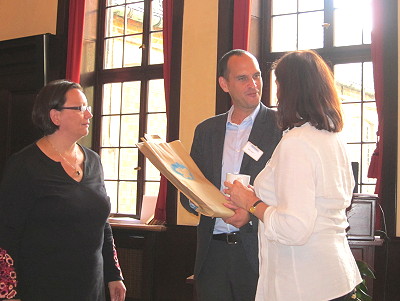 WWF is conscious that smart fishing on a sustainable basis will require action at different levels at the same time: Transparency, scientific data and their interpretation, mandatory rules for all, and effective enforcement.
WWF is conscious that smart fishing on a sustainable basis will require action at different levels at the same time: Transparency, scientific data and their interpretation, mandatory rules for all, and effective enforcement.
At its present state of development, the initiative focuses on transparency and has achieved already a number of early results.
The two interactive break-out sessions in the afternoon generated some interesting collective insights about the future of marine research in relation to some of the key challenges.
They each first collected ideas and concepts for a vision unconstrained by institutional and other considerations, then looked at obstacles in the way of realising the vision and finally drew up practical steps for implementation.
The ceremony in the historical town hall of Bremen recognised long-serving members of DGM, some of whom had joined right from the beginning. To mark their appreciation,
DGM made a donation to a tree planting initiative in support of clean water. The festive atmosphere was further enhanced by musical framing and a modern day "griot" telling a story from Inuit folk tradition.
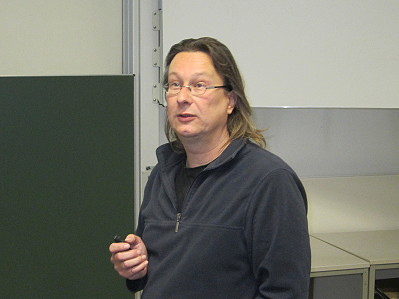 DGM member Carsten Eden of the University of Hamburg was the recipient of the Wüst Prize 2015.
DGM member Carsten Eden of the University of Hamburg was the recipient of the Wüst Prize 2015.
He spoke to the topic of what climate models can and can not do at present.
He pointed to the limited resolution of the models which used too big grid cell sizes to represent all behaviour of hydrodynamics of the ocean.
Moreover, heavy waves arising from the tides generated energy cascades which were not sufficiently integrated in most models.
His group was working on covering these parameters more realistically and thus contribute to further improvement of climate models.
Luckily, many ocean parameters change slowly so that the proxies typically used to keep the models "doable" with existing computer capacity still allow for some useful interpretations. That became clear in the ensuing discussion. Making models more realistic remained, in any event, a continuous challenge.
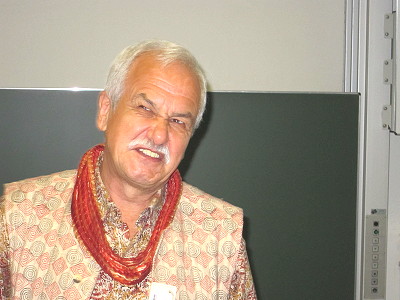 Victor Smetacek, professor. em. of the Alfred Wegener Institute - Helmholtz Centre for Polar and Marine Research in Bremerhaven, has published several influential articles in Nature and a nag for embedding his research into the big picture of evolutionary trends and Darwinian interpretations.
Victor Smetacek, professor. em. of the Alfred Wegener Institute - Helmholtz Centre for Polar and Marine Research in Bremerhaven, has published several influential articles in Nature and a nag for embedding his research into the big picture of evolutionary trends and Darwinian interpretations.
He challenged the audience with his talk titled "Unsolved questions and future tasks of marine science. Can marine research expect major break throughs if it continues on its present trajectory?"
He opened with an overview of how human perceptions are governend by the vestibular system that contributes to a sense of balance and spatial orientation. It sends signals to the eyes and the muscles to keep us upright. It helps us to make sense of the world. The sense of self that goes with it is already present in simple unicellular organisms. It is the intelligence we admire in the octopus. It does not require a brain, but resides in the body. So, how has life developed during the millions of years it existed on the planet?
We understand the evolution of life forms, such as trees developing under conditions of gravity. However, we do not understand the plankton forms in the ocean.
Why are there so many bizarre forms and how did they arise? His hypothesis is contrary to the prevailing assumption of evolution driven always by competition. Victor Smetacek suggests to test the following concept: Shape is a signal to would-be predators of plankton organisms, sensed by proprioception (body sense) and equivalent to colour and shape for visual predators.
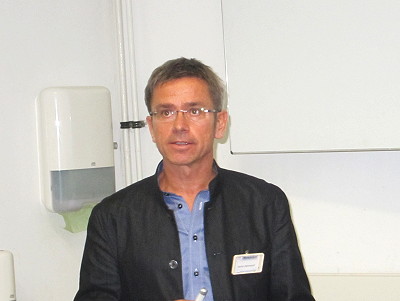 Hence, there will also be mimicry, interpreted as convergence of form, or conservation of shape, or why we observe so many cryptic species.
Hence, there will also be mimicry, interpreted as convergence of form, or conservation of shape, or why we observe so many cryptic species.
He then went on to talk about options for geo-engineering to keep climate change at bay and argued in favour of more limited experiments to explore their feasibility. Click here to see the ppt presentation.
The last impulse talk was given by Prof. Dr. Stefan Rahmstorf of the Potsdam-Institute for Climate Impact Research.
He focused his talk on "Physical tipping points as the big unknowns".
The graph below illustrates that there are two typical types of tipping points, the one to the left pertaining to sea ice and that to the right pertaining to Greenland. It is quite evident that the exact point of no return is difficult to determine.
In the case of Greenland with inland glaciers reaching into heights of 3000 m above sea level, melting below a certain level will become irreversible as losing height means more exposure to warmer air and more melting in a self-sustaining process.
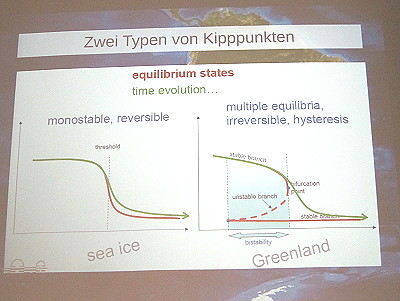 Given the mass of the ice cover in Greenland, that process will take a long time, however, at this point in time we do not know how close we are to the tipping point or whether we might even be past it.
Given the mass of the ice cover in Greenland, that process will take a long time, however, at this point in time we do not know how close we are to the tipping point or whether we might even be past it.
If all the ice in Greenland melted - possibly over more than a millennium - it would contribute an estimated 7 meters to current sea levels.
As for the West Antarctic ice shield, scientists are rather more certain that the tipping point has been past. It had been kept in place by friction as a result of sitting on a land ridge.
As the glaciers' retreat has losened it from the land ridge, warmer water can now infiltrate the space between the sea bottom and the ice, melting it from below.
Melting it all is estimated to add about three meters to global sea levels.
Lots of food for thought and further discussion and exchange for all participants thanks to inspiring impulse talks.
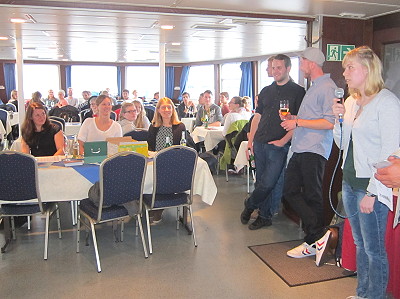 The barcamps in the afternoon were convened around topics members put forward after the presentations in order to take advantage of the diverse experience of participants. These gave ample room for continuing the conversation. The promotors of each barcamp discussion topic then took the key results back into the plenary to share with everybody.
The barcamps in the afternoon were convened around topics members put forward after the presentations in order to take advantage of the diverse experience of participants. These gave ample room for continuing the conversation. The promotors of each barcamp discussion topic then took the key results back into the plenary to share with everybody.
Before the closure of the Forum, one participant took the floor expressing the general consensus by thanking the DGM executive committee for the much appreciated and very interactive format of the forum.
For more about DGM, click here.
The day was closed with an ice breaker meet up between more experienced DGM members and participants of the YOUMARES 6.0 networking conference scheduled for the following two days. The get together on the MS Hanseat was an excellent opportunity to engage in relaxed chats over a drink. It even allowed to look already for young colleagues interested in taking advantage of the mentoring offer of older DGM members to help create the best possible conditions at the early stages of their career.
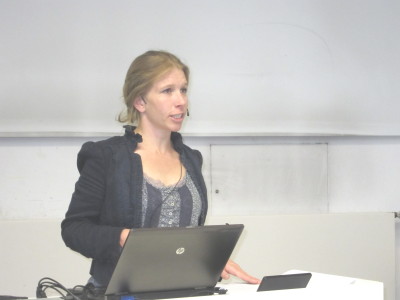 The next two days were entirely self organised by the young marine researchers (YouMaRes). Some 150 registered participants from 20 countries flocked into the parallel sessions, where session convenors had attracted between three and five oral presentations each.
The next two days were entirely self organised by the young marine researchers (YouMaRes). Some 150 registered participants from 20 countries flocked into the parallel sessions, where session convenors had attracted between three and five oral presentations each.
The sessions were structured with a focus on the following themes:
- Aquatic plastic pollution
- Genetics for sustainability
- Cephalopods and society
- Challenges and innovative solutions for monitoring pollution
- Marine social-ecological systems
Some 20 posters summarised research findings and competed for the prize of best poster. They also reflected the general trend towards more group work rather than individual research by one author.
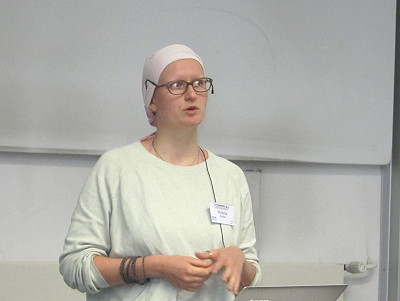 Workshops in the afternoon were e.g. visiting the media and research vessel ALDEBARAN, tips for scientific writing and institute visits.
Workshops in the afternoon were e.g. visiting the media and research vessel ALDEBARAN, tips for scientific writing and institute visits.
Few presentations addressed the global fisheries crisis.
But the session on social-ecological systems striving to advance understanding and practice of interdisciplinary approaches was certainly within the trend that is also subject to several articles in a special edition of Nature issued at just the same time as the conference.
The sessions of the second day clustered presentations around the following themes:
- Latest developments in land-based aquaculture
- Invasive species
- ScienceTainment
- Remote sensing
- Coral reef
The exhaustive Conference Book was available electronically for all participants. Following the nice tradition of earlier conferences, the event closed with a party before bidding farewell to participants from near and far.
Congratulations particularly to the organising team, and all participants for another successful networking conference!
All photos above by the author. YOUMARES 6.0 group photo courtesy YOUMARES of DGM.
